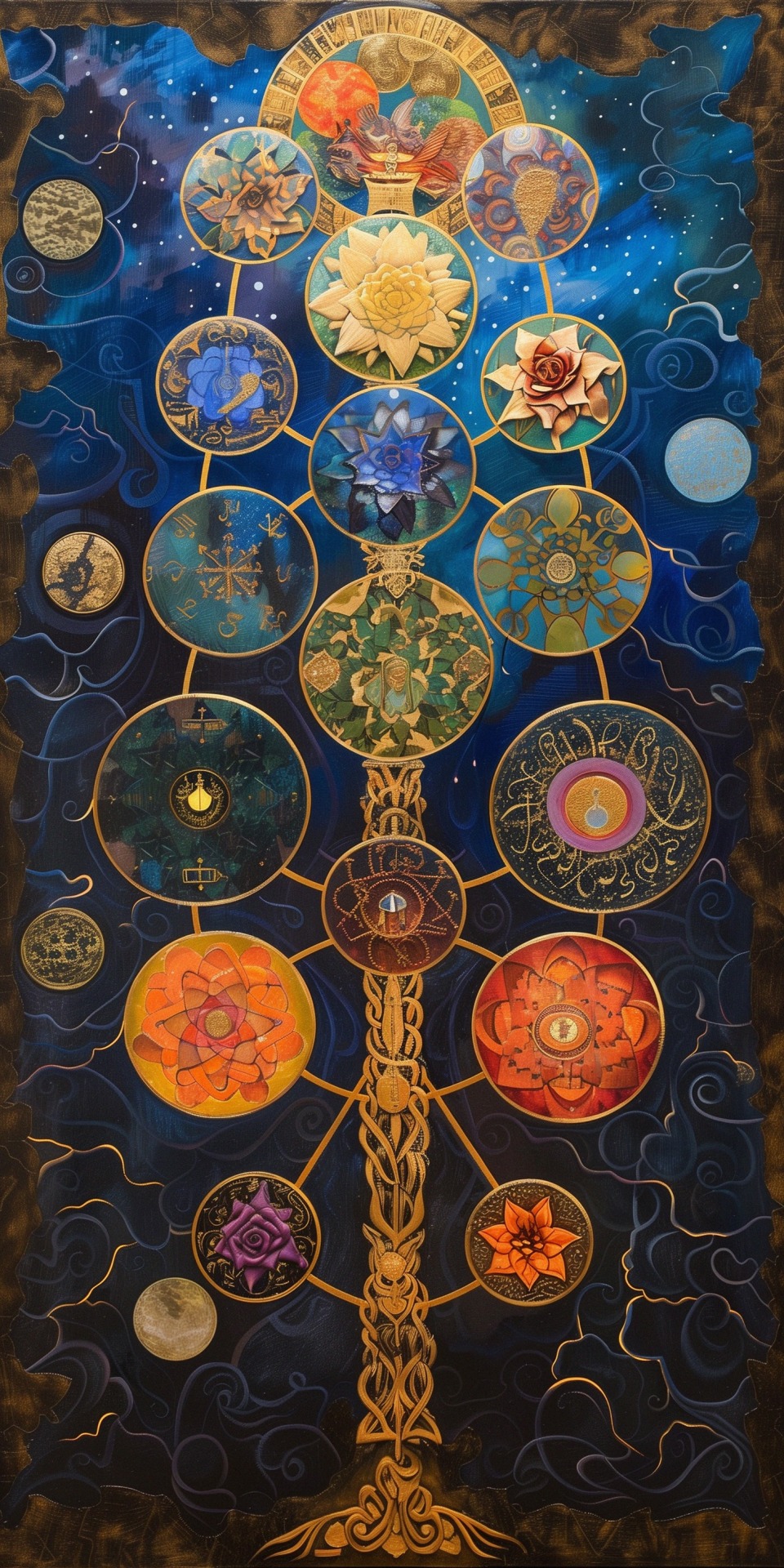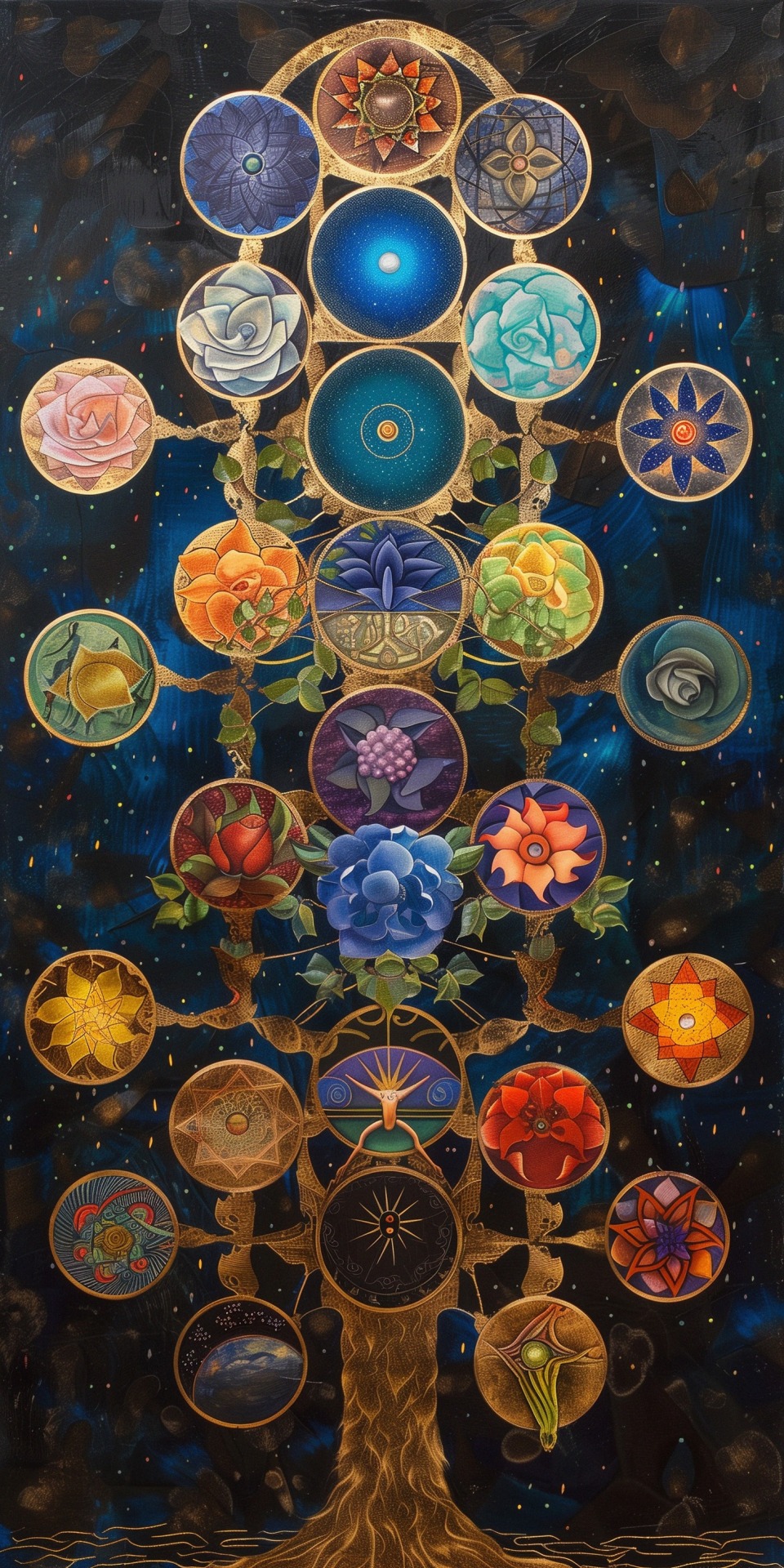#pythagorian
Explore tagged Tumblr posts
Text
The Apostle's and Niciean creeds are biblically backed and have been around as affirmation of our beliefs for almost 2thousand years now. Don't diss the Council, they were the survivors of the emperor Diocletian's reign.
The Creed is just a handy sum up of what it means to be a Christian. It's a great baseline that is 👏Biblically 👏Backed.
This week on tumblr, Chrumblr relives the Council of Nicaea
#ichthys#the creed is basically that very smart people combined the truths of the Gospel as refutation of the very common hersies of the day#i dont need to do all the math behnd the Pythagorian therom either bc its been proven already.
89 notes
·
View notes
Text



“All things ephemeral are seen as symbols; insufficiency becomes meaningful event; The indescribable is accomplished; The Eternal Feminine draws us upward.” - Goethe, Faust Jacob’s Ladder—Tree of Life Talon Abraxas
The Tree of Life (Kabbalah ) is derived from the Flower of Life. In Hebrew, it is a mystical symbol within the Kabbalah of esoteric Judaism used to describe the path to God. It is an arrangement of ten interconnected spheres (called sephiroth, meaning ‘spheres’), which represent the central organizational system of the Jewish Kabbalistic tradition or ‘cosmology’ of the Kabbalah.
The Tree of life is considered to be a map of the universe and the psyche, the order of the creation of the cosmos, and a path to spiritual illumination.
The ten spheres represent the ten archetypal numbers of the Pythagorian system. There are said to be 32 paths on the Tree of Life. The first 10 are the Sefiroth (not including Daat). The remaining 22 correspond to the lines or channels of energy that join the Sefiroth together. Each of these, in turn, corresponds to one of the 22 letters of the Hebrew alphabet.
The Crown (‘Kether’ in Hebrew): the Creator Himself.
Wisdom (‘Chokhmah’): Divine reality/revelation; the power of Wisdom.
Understanding (‘Binah’): repentance/reason; the power of Love.
Mercy (‘Chesed’): grace/intention to emulate God; the power of vision.
Strength (‘Gevurah’): judgment/determination; the power of Intention.
Beauty (‘Tiferet’): symmetry/compassion; the power of Creativity.
Victory (‘Netzach’): contemplation/initiative/persistence; the power of the Eternal Now.
Splendour (‘Hod’): surrender/sincerity/steadfastness; the power of Observation.
Yesod (‘Foundation’): remembering/knowing; the power of Manifesting.
Kingdom (‘Malkuth’): physical presence/vision and illusion; the power of Healing.
Kabbalistic tree of life
The Kabbalistic tree of life has evolved over time. Its basic design is based on descriptions given in the Sefer Yetsirah, or Book of Creation, and expanded upon in the enourmous Kabbalistic text Zohar, the book of Splendour. The ten sephira, similar to the Norse tree of life, are divided into four realms:
Atziluth: the realm of the supernal, beyond which is the ain, or no-thing.
Beriah: the creative world, of archetypes and ideals.
Yetsirah: the world of formation.
Assiah: manifest creation, the material world.
Tree of Life does not only speak of the origins of the physical universe out of the unimaginable, but also of man’s place in the universe. Since man is invested with Mind, consciousness in the Kabbalah is thought of as the fruit of the physical world, through whom the original infinite energy can experience and express itself as a finite entity. After the energy of creation has condensed into matter it is thought to reverse its course back up the Tree until it is once again united with its true nature.
Thus the Kabbalist seeks to know himself and the universe as an expression of God, and to make the journey of Return by stages charted by the Sephiroth, until he has come to the realization he sought.
63 notes
·
View notes
Text
About Sophia's origin
Ok so I'd like to clear this up cause when I make mistakes I admit them most times. Some time ago I made a post about Sophia and my being pissed that even though she appeared Greek, Reverse's team didn't seem to have tried as hard to find a native or sb with an at least understandable accent for her Greek spell but it appears this wasn't necessary because Sophia is most likely not Greek (or she's half).
For context, when the current patch came out I could guess from the aesthetic the inspiration would be either Greek or Roman and then by the focus on Pythagorians I could tell it was indeed Greek inspiration, but I didn't expect there would be a single character that'd actually use the language, like for example French characters do. So when it did I was excited but also disappointed cause unless you read the subs, you couldn't tell what Sophia was saying.
Anyway long story short, from Sophia's mentions in 6's story, she appears to be Anatolian. And while the inspiration could be mixed, time-wise, cause anyway we're in 2007 in the game but everything else is based off ancient Greece, I think she too is supposed to be from the ancient version of Anatolia, therefore neither Greek nor Turkish but either Hattian or some other Anatolian ethnicity of that time. It is said that people at the shores of Asia Minor back then did speak Greek, probably cause of the trade situation with Greece and all, therefore it now makes sense to me that they went with the broken Greek option since she is not supposed to be native.
There. These are my "findings", or rather realizations. So yeah I apologize, I didn't know and I hope she is Anatolian and neither Greek nor Turkish cause that brings in the forefront ethnicities that went extinct and adds even more diversity in the game. However I have to admit I'm a bit sceptical about the choice of hair colour as well. 37 has light blue hair and Sophia firey red so this couuuuuld be addressing one is Greek and the other Turkish, or maybe's it's me overthinking xD. Cause some of you might say oh then why 6 and 210's hair aren't significant. Well, the men's duo doesn't seem to bring a cultural contrast in the forefront but one of authority and social roles and standards. It's the common sense of the island vs the one that wishes to not follow stuff blindly. 37 and Sophia's focus though has to do with cultural contrast and differences and Sophia's adjusting to the mindset of the island through observation of the common ways (island people) and 37 (sb's different and independent approach to the common ways), while also stressing the significance of learning from each other and finding a middle ground like when 37 also tried to play, in her own way, and try to understand more about Sophia through her father's notebook.
That's all. At the end of the day, games and storytelling are artforms, so unless we have specific mentions of things, everything is up to the viewer's interpretation. That was mine.
21 notes
·
View notes
Text
Went to the chiropractor popping every bone in my body using the pythagorian theorem, accidentally activating me like a sleeper agent by popping my c4 vertibrae. I black out and kill everyone in the building only to black out again, having a stroke because i went to the chiropractor
11 notes
·
View notes
Note
I sincerely appreciate your help considering all the angles on Orphism, and have enjoyed reading about the Edmonds and Chrysanthou debate. I believe I am leaning towards the Chrysanthou side of that fence. Also, I have just recently heard that Marcuse described post-1945 Marxism as “Orphic”. I think the latter adjective was supposed to be opposed to the traditional characterization of Marxism as “Promethean”. Although I’m still not entirely sure what Orphic Marxism would consist of. I guess it would be a non-scientistic Marxism that does not affirm the existing given at the expense of “dead” traditions..? Wonder if you encountered this notion before…
Thank you again for your appreciation for any little help that I am able to offer.
Edmonds is an eminent specialist on Orphism, but I think that he goes too far with his "ultra-minimalist" approach on the Orphic movement. And his review of Chrysanthou's work was rather dismissive and aggressive.
No one believes today that there was in Late Archaic and Classical Greece some kind of Orphic "Church" with an Orphic "Bible". But I don't think that we could deny that an important Orphic movement existed back then, even if this movement was loose and there are many uncertainties surrounding it.
I think that we can admit safely that already in that time there existed a literature in poetic form attributed to the mythical charismatic personality of Orpheus (although doubts about the authenticity of the works ascribed to him appear very early), that the Orphic movement around this literature was in close connection with the Bacchic rites and mysteries, that the divine figure of Dionysus was central in it, that immortality and transmigration of the soul and the promise of a blessed afterlife on the basis of a special relationship or even identification of a part of the human soul with the divine played a major role in the Orphic literature and movement, that at least some Orphics adopted a partiular way of life as means of purification. Moreover, the identification by a major fifth century author like Herodotus of Dionysus with Osiris shows, I think, that the myth of the murder and resurrection of Dionysus played already an important role in the Bacchic rites and in the theological-soteriological speculations about him (the Bacchica and Orphica of Herodotus).
Now, it seems that there existed at least two early Orphic traditions (South Italian and Athenian/Eleusinian), each one with somehow different sensibilities, but also a tendency of "lumpen" Orphism (the one decried as charlatanism in Plato's Republic and in other ancient texts). Moreover, as I said above, many other important uncertainties about early Orphism remain, especially concerning the content of early Orphic poetry, the origin of its central ideas of immortality and transmigration of the soul, the exact place of Orphism in the history of the broader Bachhic and mysteries movement, its exact relationship with Pythagorianism, and the specifics of the early Orphic theogony and cosmogony. But I don't think that this multiplicity in the early Orphic movement and the important uncertainties about it make doubtful any of the main lines concerning early Orphism that I have described in the previous paragraph.
I have read some years ago Marcuse's most important work ("One-Dimensional Man"), but he wasn't a major influence on me. It is the first time I hear about his notion of "Orphic Marxism" and I cannot say anything about it, besides that I find it paradoxical.
Btw, I have just finished the book of Charles H. Kahn on Pythagoras and the Pythagoreans. Great work, especially concerning the relationship between Pythagorianism and Platonism and the influence of Pythagoras' figure until Kepler. Read it if you have time! It includes a few very interesting pages on Pythagoras and Orphism (although this is not one of its main themes) and some pages on the first "Perennialists" in history (Neopythagorean thinkers of Late Antiquity who believed -rather unhistorically- in the existence of an ancient univeral wisdom, which would have been the source of Pythagoras' and Plato's philosophy)! It is also interesting that there is a debate of a "maximalist' and a "minimalist" school in the case of Pythagoras too: for the "minimalists" Pythagoras was just a religious figure and founder of a religious sect and the philosohical and scientifc achievements attributed to him were creations of later members of his school, whereas for the "maximalists" Pythagoras was not only a religious innovator and teacher, but also an important philosopher and proto-scientist (although of course many of the things for which he was credited in Late Antiquity were the work of thinkers inspired by him). Kahn himself is a moderate "maximalist", although he believes that few things can be said with certainty about the historical Pythagoras. Pity, however, that Kahn does not write anything in his book about the Islamic Neopythagoreanism of the Brethren of Purity (late 9th or 10th century CE).
4 notes
·
View notes
Text
Foolish taught a literal toddler the Pythagorian theorem?!?!
16 notes
·
View notes
Text
literally JUST used the Pythagorian theorem to solve a shipping problem at work right now
4 notes
·
View notes
Text
in the future do you think historians are going to read a bunch of CS theory papers and think we're all in some sort of religious cult like the pythagorians where we worship The Almighty Oracle who gives us answers to NP-Hard problems
#In the beginning‚ the Oracle created Alice.#But Alice was lonely‚ she had nobody to communicate with‚ so the Oracle created Bob.
3 notes
·
View notes
Text
Jeremy Kahn was a gifted child
Above we can see Jeremy Kahn at 13 years old Jeremy Adam Kahn born in October 20, 1969. He is an American Mathematician who has won the Academy Award in Mathematics. He has grown up in New York and he was a student in Hunter College High School. At 7 years old he found quadratic equations, at 8 years old he designed an identical equation and at 10 years old he proved the Pythagorian Theory. Kahn…

View On WordPress
0 notes
Text
This makes sense. Historically, the hard ontological argument might be better represented in ancient Pythagorianism

Sometimes I read stuff and I just wanna shake someone like "WHY IS NOBODY TALKING ABOUT THIS"
2K notes
·
View notes
Text
Nature & the Cosmos are made up of intricate PATTERNS !!





#golden ratio#nature#fibonnaci#patterns#mathematical#repetition#fractals#DNAsequence#spirals#pythagorian#golden mean#perfection
17 notes
·
View notes
Text
You: Sculptor of Worlds
In order to do something, you have to know how to do it. If you play an instrument, but cannot otherwise speak to the degrees with which you play, then you know but one language – that of your body performing systematic actions. Outside of your own mind and body, it is simply a dead language. Dead because there is no one else who could understand it besides yourself. To speak of the actual playing is to speak of the sound to whatever order and degree it is which you mean to speak – all without actually requiring the instrument. Today, there are many de facto theories used in various areas of society, in fields of study, performance and industry, however, we must keep in mind that each and every individual has their own preference for how sufficiently one particular dimension of the world should be cohered and considered against each other. This is where individuation arises.
If you cannot explain it, then you do not know what it is you claim you do.
The reading is not the writing. The moment is not the memory.
This is the fruitful tree before you and there is, alas, no low hanging fruit here. One must climb. One must come to think of memories in such a manner that writing them becomes far more than the experience – far more freeing – than the moment ever was or could be. Learn this by learning of yourself and knowing your feelings and the details of your observations. When you know yourself, you know all others. You may find far fewer individuals to be familiar with themselves than you had expected. No matter, we find that the other is no longer an assemblage of vague and superficial agreements, a bundle which we have no coherent or detailed reasoning for. When we find coherence, we see that the other is actually another and so we seek their texture, we seek their novelties and their meanings, their tells and everything else.
What you fundamentally are or could be is all you can know them to be.
Know them as far and wide as you must, as shallow or deeply as necessary.
Sculpt the world as you must see it, and never let it be deformed by another.
#philosophy#ontology#teleology#whatislife#thinking#thought#midfulness#cognitive#cogsci#epistemology#pythagorian#occult#pythagoreanism#writing#prose#inspire#care#quote#thoughtful#pondering#living#life#friends#social#socializing#happy#path#poetry#meaning#inspiration
0 notes
Text



Jacob’s Ladder—Tree of Life Talon Abraxas
The Tree of Life (Kabbalah ) is derived from the Flower of Life. In Hebrew, it is a mystical symbol within the Kabbalah of esoteric Judaism used to describe the path to God. It is an arrangement of ten interconnected spheres (called sephiroth, meaning ‘spheres’), which represent the central organizational system of the Jewish Kabbalistic tradition or ‘cosmology’ of the Kabbalah.
The Tree of life is considered to be a map of the universe and the psyche, the order of the creation of the cosmos, and a path to spiritual illumination.
The ten spheres represent the ten archetypal numbers of the Pythagorian system. There are said to be 32 paths on the Tree of Life. The first 10 are the Sefiroth (not including Daat). The remaining 22 correspond to the lines or channels of energy that join the Sefiroth together. Each of these, in turn, corresponds to one of the 22 letters of the Hebrew alphabet.
The Crown (‘Kether’ in Hebrew): the Creator Himself.
Wisdom (‘Chokhmah’): Divine reality/revelation; the power of Wisdom.
Understanding (‘Binah’): repentance/reason; the power of Love.
Mercy (‘Chesed’): grace/intention to emulate God; the power of vision.
Strength (‘Gevurah’): judgment/determination; the power of Intention.
Beauty (‘Tiferet’): symmetry/compassion; the power of Creativity.
Victory (‘Netzach’): contemplation/initiative/persistence; the power of the Eternal Now.
Splendour (‘Hod’): surrender/sincerity/steadfastness; the power of Observation.
Yesod (‘Foundation’): remembering/knowing; the power of Manifesting.
Kingdom (‘Malkuth’): physical presence/vision and illusion; the power of Healing.
Kabbalistic tree of life
The Kabbalistic tree of life has evolved over time. Its basic design is based on descriptions given in the Sefer Yetsirah, or Book of Creation, and expanded upon in the enourmous Kabbalistic text Zohar, the book of Splendour. The ten sephira, similar to the Norse tree of life, are divided into four realms:
Atziluth: the realm of the supernal, beyond which is the ain, or no-thing.
Beriah: the creative world, of archetypes and ideals.
Yetsirah: the world of formation.
Assiah: manifest creation, the material world.
Tree of Life does not only speak of the origins of the physical universe out of the unimaginable, but also of man’s place in the universe. Since man is invested with Mind, consciousness in the Kabbalah is thought of as the fruit of the physical world, through whom the original infinite energy can experience and express itself as a finite entity. After the energy of creation has condensed into matter it is thought to reverse its course back up the Tree until it is once again united with its true nature.
Thus the Kabbalist seeks to know himself and the universe as an expression of God, and to make the journey of Return by stages charted by the Sephiroth, until he has come to the realization he sought.
39 notes
·
View notes
Text
ADHD + Math = Huh?
I'm slow, not stupid. Yes, there is a difference. I can make all the connections a "smart" person can, it just takes longer because there's like 5 extra steps to every problem because my ADHD brain can't compartmentalize.
This math problem, for example:
15
×20
_____
Now, most people would probably look at this and do it the way taught in school. Multiplying the top ones place by the bottom ones place, then multiplying the top tens place by the bottom ones place, etc, etc.
When I try to solve this problem, I think, okay, so,
1 - 15
2 - 30
3 - 45
4 - 60
5 - 75
6 - 90
7 - 105
8 - 120
9 - 135
10 - 150
150 × 2 = 300
15 × 20 = 300.
On a really good day I might stop at 75 and go, 75 + 75 = 150, 150 × 2 is 300, 15 × 20 = 300. If I were smarter I could even simplify it to 20 × 5 = 100, 100 × 3 = 300, 15 × 20 = 300. However, that probably wouldn't occur to me unless the 20 was on the top of the problem because I read them top to bottom.
Taking all of this into account, Algebra is Hell. You want me to do what?
#seriously though#X squared means multiply by two right?#Or was it three?#Which power is squared to- the second or the third?#Don't even get me started#On quadratic equations#The fuck are those anyway?#If I have to plot one more line on a graph#It'll be too soon#Slopes and coefficients and variables oh my#Why can't I comprehend pythagorian theorem?#Fuck this shit i'm out#If only#Unfortunately I have to learn this for college#Though when I'll need to know this shit for gardening I have no idea#I'm not even taking math this semester#But I've withdrawn from intermediate algebra twice#And I can't get my degree till I pass at least one math course#I'm dreading it so much#Even though I'm going to be taking a different-supposedly easier-class#I hate math so much
6 notes
·
View notes
Text
why do i decide to make loft plans while i am violently dizzy
#PLEASE i hate geometry so so much fuck you mr G i know you said this knowledge would help me some day and you were WRONG#i refuse to use pythagorian theorem for this shit fuckyoufykcyoufuckfucuyfkcyfj
2 notes
·
View notes
Text
A rhombus is a parallelogram with two opposite and equal acute angles, two opposite and equal obtuse angles, and equal sides!

Think of a slanted square; all the sides are still the same length, but now two of the right angles are smaller, and two are bigger :D

im going to have a math test after lunch wish me luck
#and the pythagorian theorem is c^2 = a^2 + b^2#if ye need any other help let me know!! :D I love math hehe
12 notes
·
View notes